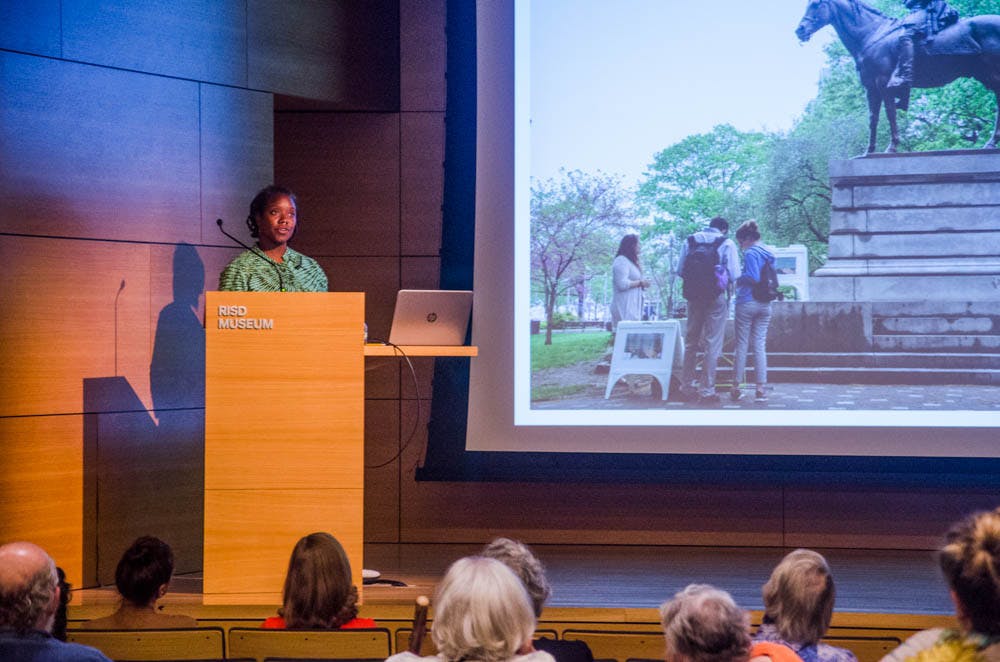The Rhode Island School of Design Museum gave visitors a preview of the objects, exhibitions and renovations coming to the museum in the near and distant future during a talk last Thursday titled “Today and Tomorrow: Museum Update.” The event kicked off the September edition of Third Thursday, a monthly cost-free event night at the museum.
The talk was planned to give the museum’s members, donors and visitors — the patrons that keep the museum alive and active — a behind-the-scenes look at the museum’s inner-workings, said Director John Smith, who spoke during the talk.
In the last fiscal year, the museum reached a high of nearly 120,000 visitors — a significant increase from past years, when the number of visitors generally ranged between 85,000 and 100,000 people, Smith said. This increase “means that the message about the museum and what we’re doing is getting out to our community and exciting people,” Smith said. It also “goes against a larger national trend in museum attendance, which in many places … is declining — in some places at a very rapid rate,” he added. The museum held about 1,100 programs in the last fiscal year and drew in nearly 30,000 of the 120,000 visitors during various events for adults and students.
Some of the major projects Smith detailed are a part of the upcoming exhibition “Repair and Design Futures,” which “uses textiles as a metaphor for mending and repair throughout our society, throughout our culture,” Smith said. Smith also talked about the museum’s plans to celebrate the 50th anniversary of the exhibition titled “Raid the Icebox” curated by Andy Warhol in 1969-1970. The original project directors invited Warhol to create an exhibition from the museum’s existing collection, which “was both a scandal and a success at the time,” Smith said. The museum has invited ten artists and artist-collectives to rethink the task, with related projects to be rolled out over several months, Smith explained.
Associate Curator of Costume and Textiles Laurie Brewer discussed one of the museum’s recent additions to the department’s 30,000 object collection — a fish leather jacket created by American designer Rick Owens as part of his 2016 “Mastodon” collection. Owens’ collection explored his uneasiness about environmental change, Brewer said. The leather, made from the durable skin of a large Brazilian pirarucu fish, was once a waste product thrown out in the process of cooking the fish’s meat but has been turned into a viable economic resource for communities in the Amazonian region to which the fish is native, Brewer said. This piece fits into Brewer’s personal concerns of human ecology and textiles but also into the larger collection, she said, as it joins other pieces made of aquatic materials, such as a purse composed of walrus leather that has had a place in the collection since 1958.
This additional piece exemplifies one of the other key thematic tenets of Smith’s presentation — the growth of the museum’s collection and the new ways in which the collection will be displayed. Along with an increase in the number of items available for viewers online, Smith outlined plans for the renovation and reopening of Gallery C9, the museum’s original exhibition space built in 1897, which has been closed for almost a decade, he said. The renovation will bring the gallery up to date on fire and safety codes and create room for the display of more objects.
Gina Borromeo, the museum’s curator of ancient art, discussed some of the ethical concerns of exhibiting ancient objects in her presentation on research conducted on Nesmin, the museum’s resident mummy. Though Nesmin’s body has been displayed outside of his coffin in the past, the museum is “now rethinking whether it is ethical at all to show human remains in an art museum, and so we are in the process of putting Nesmin back in the coffin, where he will once again be embraced by Nut and surrounded by protective sky creatures,” Borromeo said, emphasizing that learning about ancient Egyptian funeral practices will still be possible without viewing the body.
The coffin that Nesmin was buried in gives insight into his life, Borromeo said. One section of hieroglyphs explains not only that he was priest of the fertility gods but also that the previous five generations of his family were as well, she added. The detail provided on the inscriptions of his coffin has allowed researchers make a connection between Nesmin and his mummified relatives. His father is currently being preserved at the Cairo Museum, and his grandfather, also named Nesmin, is on view at the Metropolitan Museum of Art, Borromeo said.





